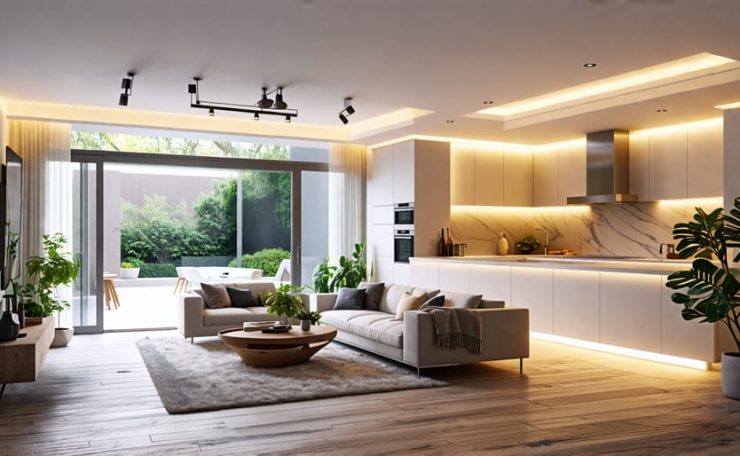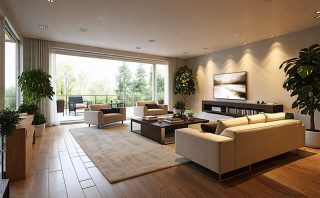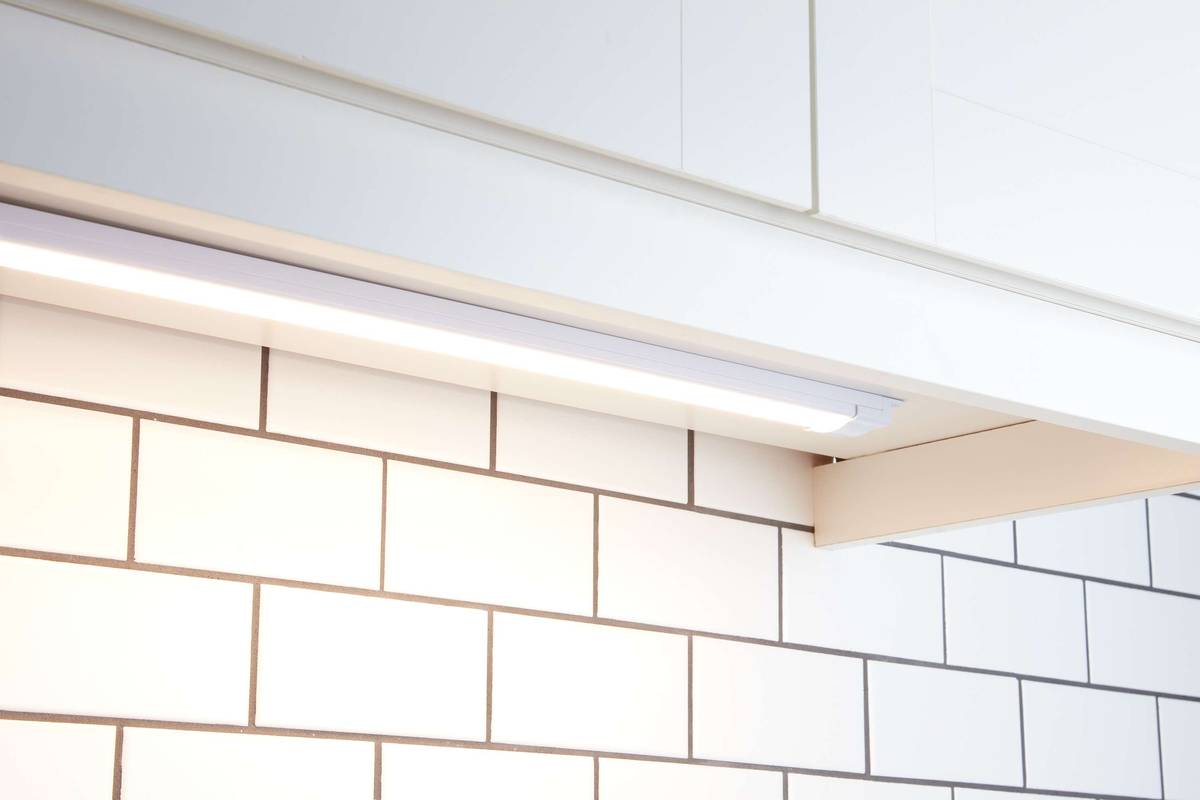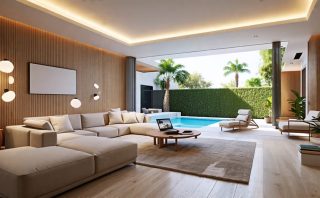Determine the ideal lighting level for each room by considering its primary function. Use warmer, lower-intensity lighting in living rooms and bedrooms to create a cozy atmosphere. Apply brighter, cooler lighting in kitchens and bathrooms for enhanced visibility and functionality. Incorporate task lighting, such as under-cabinet lights or desk lamps, for focused activities requiring precision. Customize your lighting design with dimmer switches to adjust illumination levels according to time of day and personal preference. For expert guidance, consult with lighting professionals to tailor solutions that enhance both functionality and aesthetic appeal in your home.
Recommended Lighting Levels for Common Residential Areas
Living Rooms and Family Rooms
Achieving optimal lighting in living rooms and family rooms is essential for both ambiance and functionality. These spaces serve multiple purposes—from casual gatherings to intimate evening settings—and therefore require flexible lighting solutions. A layered lighting approach is often recommended, combining ambient, task, and accent lighting to create a dynamic and adaptable environment. For general illumination, ambient lights such as ceiling fixtures or floor lamps can provide a base layer of brightness. Dimmer switches are especially useful, allowing you to adjust the light intensity to match the room’s mood.
To enhance specific areas, task lighting like table or desk lamps can be strategically placed for activities such as reading or working on hobbies. Accent lighting, including wall sconces or LED strips, highlights architectural features or artwork, creating focal points that enrich the room’s visual appeal. Modern advancements in technology also offer smart lighting solutions that allow for remote control and automation, further elevating the user experience. Discover the magic of smart lighting to personalize and optimize illumination levels to suit your needs.
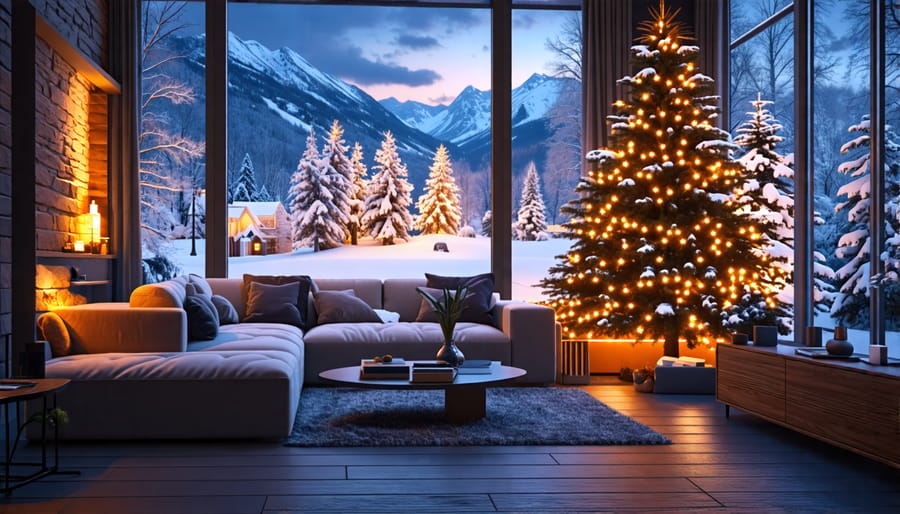
Kitchens
In the kitchen, achieving the right lighting levels is crucial for safety and efficiency. Whether you’re cooking a complicated recipe or simply making a meal, appropriately layered lighting ensures you can see clearly and work safely. Start with ambient lighting, such as recessed ceiling lights, to provide general illumination. For task lighting, consider options like under cabinet lighting, which brightly illuminates countertops for cutting and preparation activities, reducing shadows that can lead to accidents. Accent lighting, like pendant lamps over islands or dining areas, adds a touch of style while boosting functionality. It’s important to maintain a balance between these layers, aiming for around 5,000 to 10,000 lumens for an average-sized kitchen, though this can vary depending on personal preference and kitchen layout. Integrating dimmers allows adjustment based on time of day and activity, enhancing versatility and energy efficiency. For tailored solutions, consulting with a lighting expert can provide insights into the best products and configurations for your space.
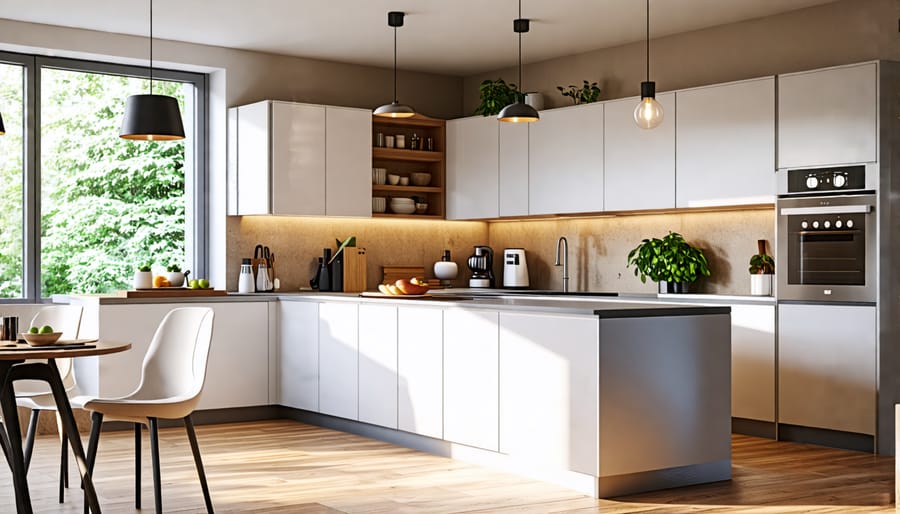
Bedrooms
Creating the perfect lighting atmosphere in a bedroom requires a balance between comfort and personal preference. To enhance relaxation, consider soft, warm lighting options, such as bedside lamps with dimmable LED bulbs or sconces with adjustable angles, which provide flexibility for activities like reading or unwinding. Layering lighting with a mix of ambient, task, and accent lights can bring depth and functionality to the space. For those seeking personalized solutions, a consultation with a lighting expert can offer tailored advice to harmonize with your bedroom’s design and your lifestyle needs, ensuring both functional and aesthetically pleasing results.
Bathrooms
In the bathroom, lighting serves dual purposes: functionality and relaxation. For practical use, such as grooming or applying makeup, ensure task lighting is bright and evenly distributed. Illuminating the vanity area with fixtures on either side of the mirror can reduce shadows, with recommended illuminance levels around 75 to 100 foot-candles. For a more relaxing ambiance, consider dimmable lights or integrated LED features that offer softer, adjustable brightness, ideal for unwinding in a bath. Balance natural and artificial light for a harmonious atmosphere, and explore options like moisture-resistant fixtures to ensure safety and durability.
Customizing Lighting to Enhance Interior Design
Highlighting Features with Accent Lighting
Accent lighting serves as an excellent tool for highlighting key features within a residential space, adding depth and a layer of sophistication to any room. Whether it’s a treasured piece of art, architectural detail, or a unique design element, accent lights focus attention precisely where it’s desired. Typically, accent lighting is strategically placed to create focal points, using fixtures like track lights, wall sconces, or recessed lights. It’s important to balance the intensity of accent lighting with the ambient and task lighting in the room, ensuring a harmonious interplay that enhances the overall aesthetic without overwhelming the senses. When selecting accent lighting, consider the color temperature and beam angle to achieve your desired effect. For instance, a narrow beam provides a concentrated burst of light, ideal for small objects or areas, while a broader beam softly illuminates larger features. Consulting with a lighting professional can offer personalized solutions tailored to your specific needs, ensuring each highlighted element in your home shines brilliantly.
Integrating Lighting with Color Schemes
Creating a cohesive atmosphere in your home involves aligning your lighting schemes with your room’s color palettes. Lighter room colors, such as whites and pastels, reflect more light and can make a space feel bright and airy. In these settings, use softer, diffused lighting to prevent harsh contrasts. Conversely, darker colors, like deep blues and greens, absorb more light. In these rooms, consider brighter, more focused lighting to enhance visibility while highlighting the room’s depth and textures.
To maintain harmony, choose light fixtures that complement your color scheme. For warm-toned rooms, opt for lighting with warm, yellow-toned bulbs to maintain a cozy feel. In contrast, cool-toned rooms benefit from brighter, blue-toned lights, enhancing a crisp, modern aesthetic. Dimmers are an excellent choice for versatile lighting control, allowing you to adjust the ambiance to suit your needs. Personalized consultations can further tailor solutions, ensuring your lighting perfectly aligns with your home’s unique palette and functional requirements.
Choosing the Right Bulbs and Fixtures
LED vs. Incandescent: What Works Best
When choosing between LED and incandescent bulbs for residential lighting, consider efficiency and lighting quality. LED lights are renowned for their energy efficiency, using up to 75% less energy compared to incandescent bulbs, which translates into considerable cost savings over time. Additionally, LEDs offer a longer lifespan, often lasting over 25,000 hours, reducing the frequency of replacements. In terms of lighting quality, LEDs provide a wide range of color temperatures and are available in dimmable versions, offering versatile lighting solutions for various residential settings. Incandescent bulbs, while offering a warm and cozy light, are less efficient and have a shorter lifespan. For homeowners prioritizing sustainability and long-term savings, LEDs are the superior choice without compromising on quality and ambiance.

Fixture Selection Tips
Selecting the right fixtures is key to achieving both functionality and aesthetic appeal in your residential lighting design. Begin by assessing each room’s purpose and natural light levels. In living areas, opt for adjustable fixtures like floor lamps or track lighting to offer flexibility and layered illumination. For kitchens, prioritize bright, focused lighting such as recessed or under-cabinet lights to enhance visibility. Bedrooms benefit from softer, ambient lights, so consider bedside lamps with adjustable brightness. Bathrooms require a combination of task and ambient lighting; overhead fixtures paired with vanity lights work best. Always ensure your fixture choice complements room décor and meets recommended lighting levels. Personalized consultations can provide tailored solutions, ensuring optimal lighting performance and efficiency.
The Role of Natural Light in Residential Spaces
Natural light is a vital component in residential spaces, working harmoniously with artificial lighting to enhance both ambiance and functionality. Its ability to illuminate a room naturally reduces the reliance on electrical lights, thereby improving energy efficiency. Sunlight streaming through windows not only enhances the sense of space but also highlights architectural elements and enhances the colors of interiors, creating a more inviting atmosphere. For homeowners, interior designers, and architects, the strategic placement of windows and skylights is crucial. This involves considerations such as orientation to maximize daylight while minimizing heat gain, which can significantly influence the comfort and energy consumption of a home.
Utilizing natural light also plays a role in wellness by supporting the body’s circadian rhythms, leading to improved mood and well-being. To fully capitalize on this, combine it with smart home lighting solutions that allow for customizable lighting scenarios, seamlessly merging natural and artificial light. Consider consulting with a lighting professional who can offer personalized advice tailored to your home’s specific needs. This ensures not only aesthetic appeal but also efficient, sustainable lighting solutions. By thoughtfully integrating natural light, residential spaces can achieve a balanced and energy-conscious environment, aligning with modern lighting recommendations for functional and aesthetic excellence.
Consultation and Personalization with DonsBulbs Lighting Design
At DonsBulbs, we understand that lighting plays a crucial role in transforming spaces. Our personalized consultation services are designed to offer bespoke lighting solutions tailored to your specific needs. Whether you’re a homeowner looking to enhance the ambiance of your living room or a commercial business owner aiming to improve workspace efficiency, our experts provide insights and recommendations that suit your environment and preferences. From understanding room dynamics to choosing the right fixtures, we guide you through every step of the process, ensuring that the lighting not only meets functional requirements but also elevates aesthetic appeal for a truly customized experience.
Conclusion
As we conclude, it’s crucial to recognize the significant impact proper lighting can have within residential spaces. By understanding the recommended lighting levels and considering both functionality and aesthetics, homeowners can transform their environments into well-lit sanctuaries. Whether you’re designing a cozy living room or an efficient workspace, the right light intensity and color temperature are key to enhancing both mood and productivity. Architects and interior designers can leverage these insights to create inviting atmospheres, while event planners and business owners can ensure their venues are both visually appealing and practical. Remember, personalized consultations can offer tailored solutions, ensuring each area of your home is lit according to your unique needs and preferences. Don’t overlook the benefits of professional guidance—invest in high-quality lighting products that harmonize with your interior design plans. Explore various options and make calculated choices to illuminate your home with both style and substance.

